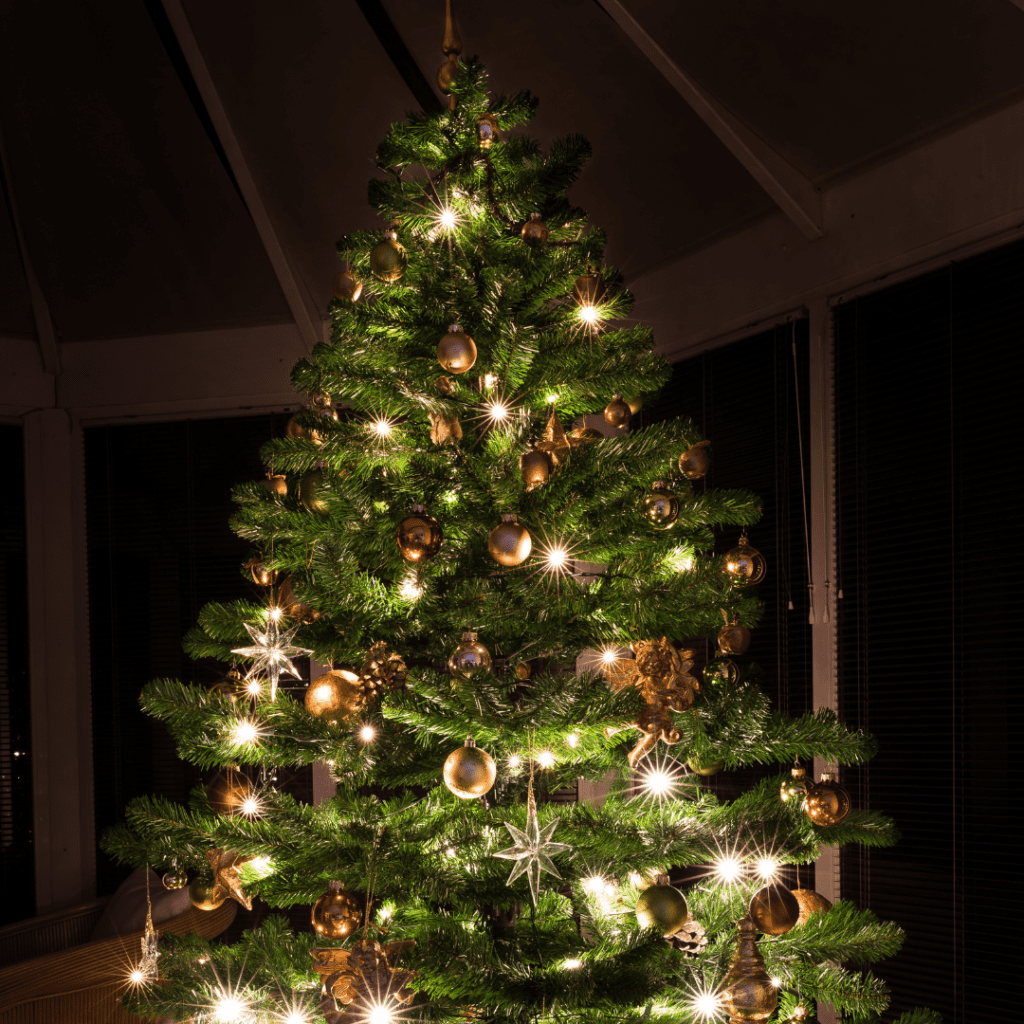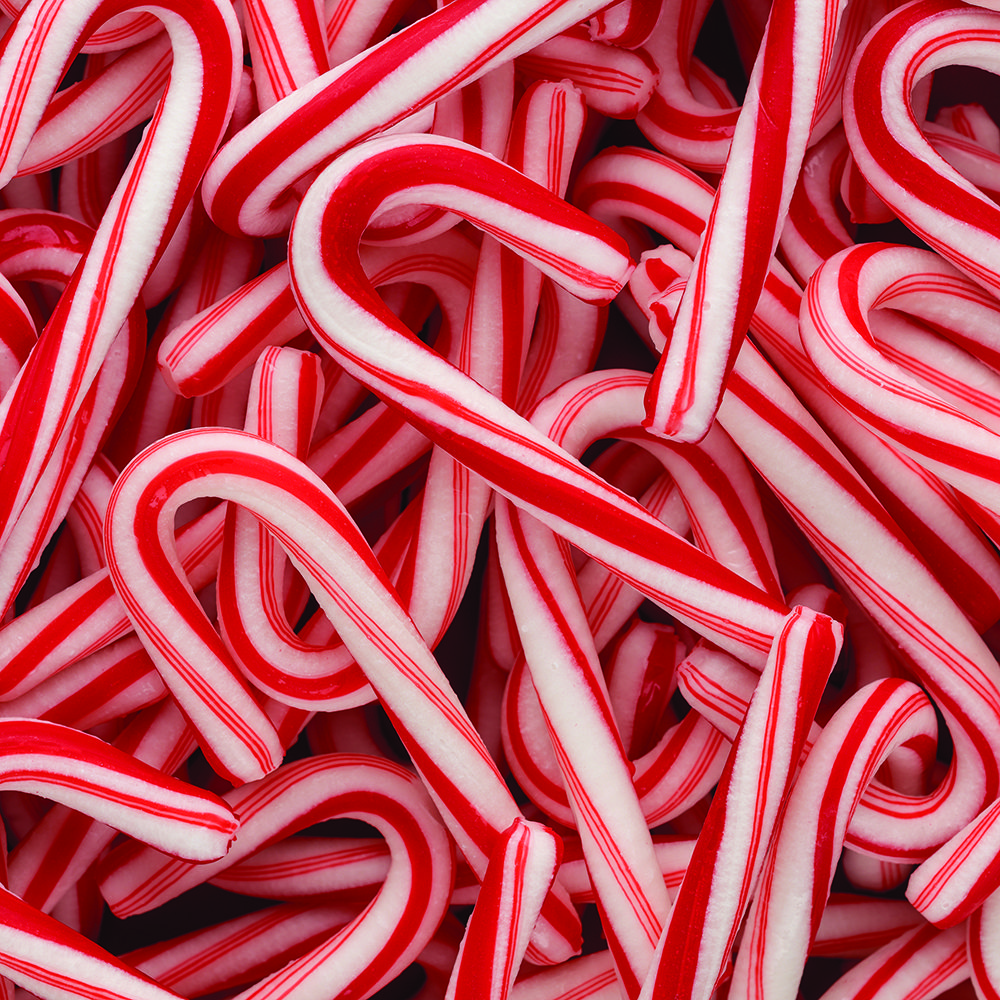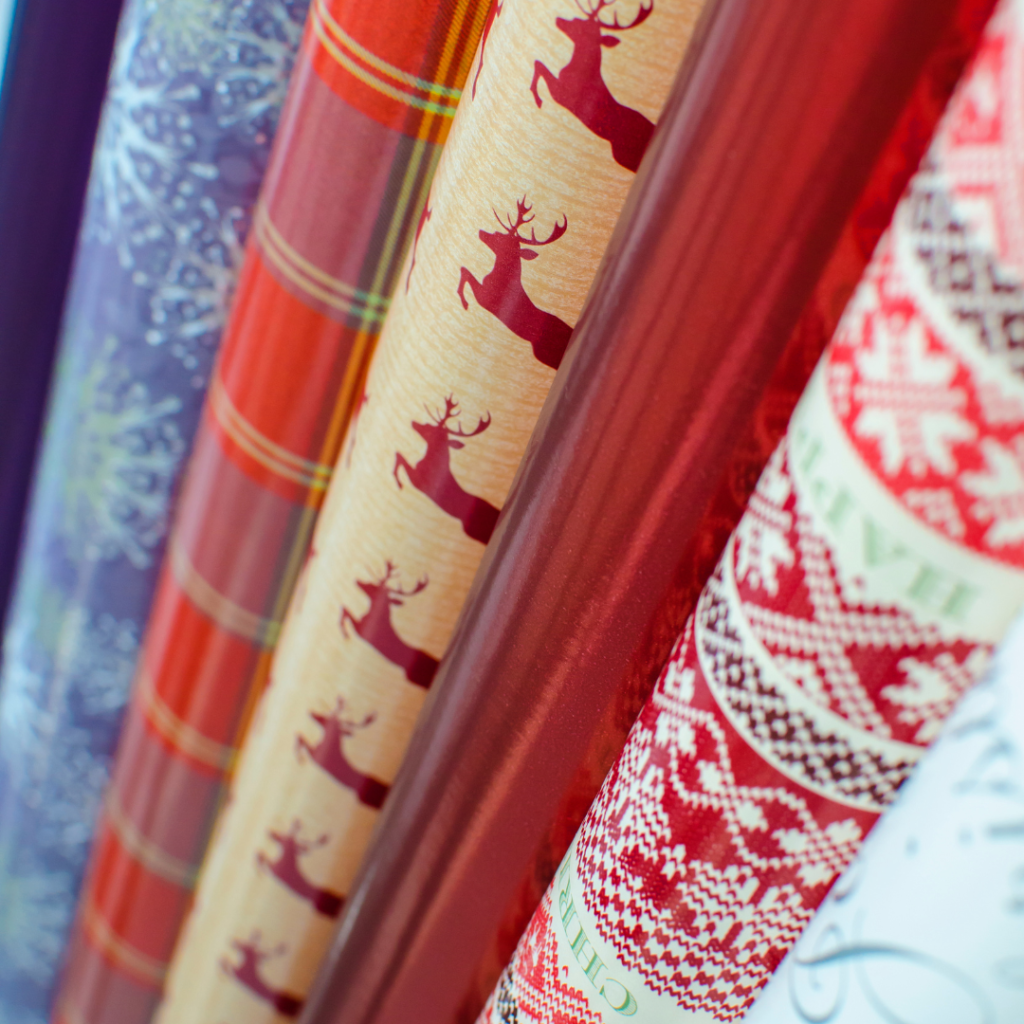America is a big country, and we do things big.
We crunch into 12.5 million tacos a day.
We burn out 150 million AA batteries per month.
We tear off 2.6 billion (billion) miles of toilet paper every year.
Getting a mental grip on that kind of bigness is hard, which is why thoughtful nerds often translate big numbers into big things. A stack of pancakes as tall as the Empire State Building, for example, or as heavy as the USS Nimitz.
Not surprisingly, the holidays lend themselves very well to comparative demonstration. We do Christmas big because we can’t help ourselves. ’Tis our nature to consume, and the feverish commercialism of the season gives us an annual excuse to do it with both hands.

A Christmas tree is the perfect gift for a guy. The plant is already dead.
—Jay Leno
Americans didn’t give a fig about Christmas trees until 1850, when the popular women’s magazine Godey’s Lady’s Book ran an etching of Queen Victoria standing in front of one. Fast-forward 172 Christmases and we can boast 15,000 Christmas tree farms on 310,000 acres producing up to 30 million tinsel traps per annum. Come January, when those formerly fragrant fire hazards no longer serve any festive purpose, nearly all of them are turned into mulch. About 500,000 tons of mulch. That’s 1 billion pounds, enough mulch to cover 108 square miles of Earth to a depth of 3 inches.
Applied locally, one season’s crop of Christmas tree compost would lay a nourishing blanket over every square inch of every Jefferson County Open Space park, plus the entire City of Boulder, with enough left over to sprinkle atop the Evergreen Community Garden to a depth of something like 230 feet. That’s a big mess o’ mulch.

I’ve learned that you can tell a lot about a person by the way they handle these three things: a rainy day, lost luggage, and tangled Christmas tree lights.
—Maya Angelou
In 1894, most Americans wouldn’t hang Christmas lights on a bet. Electricity was still within the realm of science fiction in the public mind, and it was widely believed that noxious electric “vapors” leaking from bulbs and wires would poison the festive atmosphere. In 1895, President Grover Cleveland hung Christmas lights in the White House and didn’t grow a third eye on his forehead, persuading most Americans to soften their position on the twinkling strings.
In 2022, some 73 percent of American households will collectively purchase about 150 million sets of Christmas lights, which will together account for 6 percent of the country’s electrical load during the month of December. Connected end-to-end, which UL Laboratories doesn’t recommend, that’s a smidge over 4 trillion bulbs on 3.75 billion feet of cord, which translates into 710,227 miles of Christmas cheer.
Assuming sufficiently robust fuses could be devised, America’s annual investment in Christmas lights could reach to the moon and back, and then back to the moon, or completely around the equator 28 times. Of course, stringing colored lights through the black deeps of space or across the restless Pacific might not be feasible. Better we should simply hang them around the perimeter of the continental United States 64 times, or around Africa 37 times, or around the vast Eurasian continent 7 times. Anyone know the voltage in Kamchatka?

I passed through the seven levels of the candy cane forest….
—Buddy the Elf
Christmas is full of traditions. According to one of them, in 1670, the exasperated choir master of Cologne Cathedral bethought to preserve the solemnity of his beloved “Living Creche” performance by handing out “sugar sticks” so that fidgety children would have something to occupy their noisy little mouths. Intervening centuries have not diminished the youthful passion for sweets, and these days we Americans fill our mouths with 1.7 billion candy canes per year, nearly all of them purchased between Thanksgiving and Christmas to the tune of $170 million.
A treat petite, the standard candy cane stands a mere 5 inches from cap to crook, weighs half an ounce, and presumably arrives on these shores aboard repurposed supertankers from really big factories in Canada, Mexico and China. If packaged en masse, a single season’s supply of candy canes would fill a brightly colored plastic bucket measuring 7.04 million cubic feet, which is more than three times the capacity of Evergreen Lake and enough sugar sticks to fill Coors Field to the foot of the Rockpile, which should give Bill Schmidt food for thought before the next Fan Appreciation Day.

And then I always fold over my ends. Like this. And then roll the box very carefully on this rectangle of paper, pulling it taut. Because you want to see nose. And you don’t want any wrinkles.
—Martha Stewart
As if you didn’t know it all along, surveys say most Americans think wrapping presents is the biggest bummer of Christmas. Indeed, the only thing worse than doing something you hate is doing a lot of it, and sources inside the wrapping paper industry tell us the average grown-up will wrap something close to 40 gifts between T-Day and the Big Day.
Before this Christmas Eve, we’ll spend about $8 billion on 520 million rolls of bright, shiny wrapping paper, about 10 percent of U.S. paper market revenue. By evening on Christmas Day, we’ll deposit about 280 million rolls-worth of crumpled mess in the brown barrel, which helps explain why national garbage collection goes up 25 percent every December. It seems that more than half of our wrapping paper can’t be recycled. All that shiny is often thin, unrecyclable plastic laminate, and glitter, foil, and many other festive embellishments likewise contraindicate interment in the hallowed green barrel.

But all of it looks right pretty under the tree, all 4.46 billion square feet of it. To be clear, that’s 160 square miles of everybody’s least-favorite Christmas duty, and only the Wise Men know how much cellophane tape. For what it’s worth, the same 520 million rolls would gift wrap the entire Guanella Pass neighborhood above timberline, every summit and valley from Mount Logan to Torrey’s Peak, and from Argentine Pass to the Evans Group. Imagine a more Colorful Colorado!
